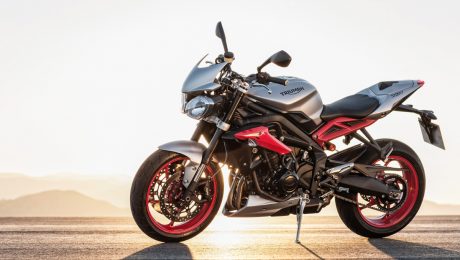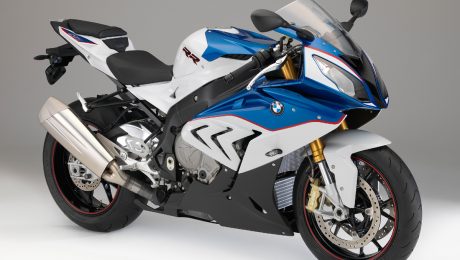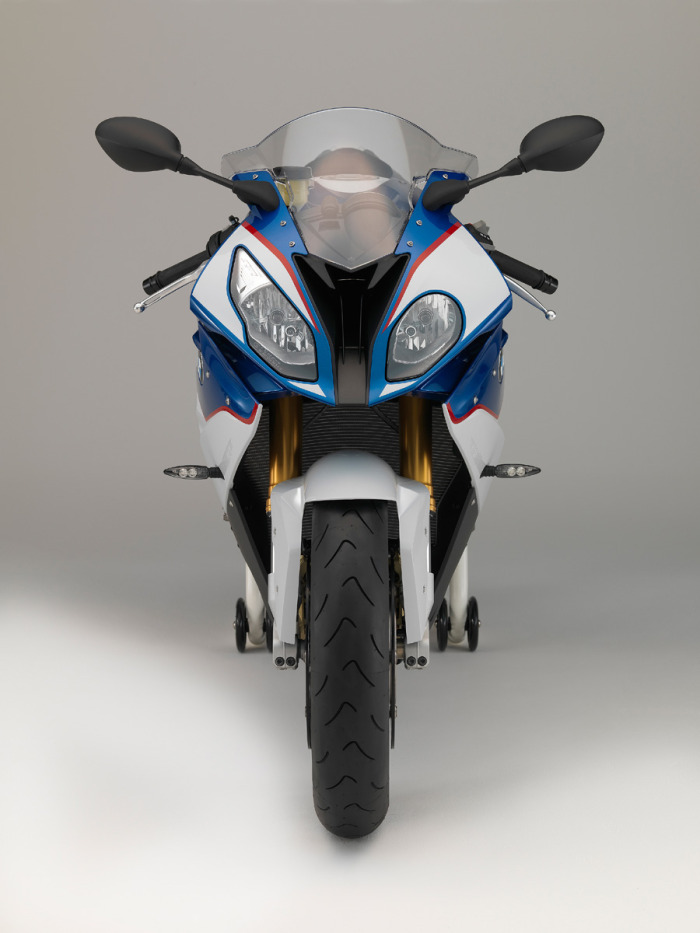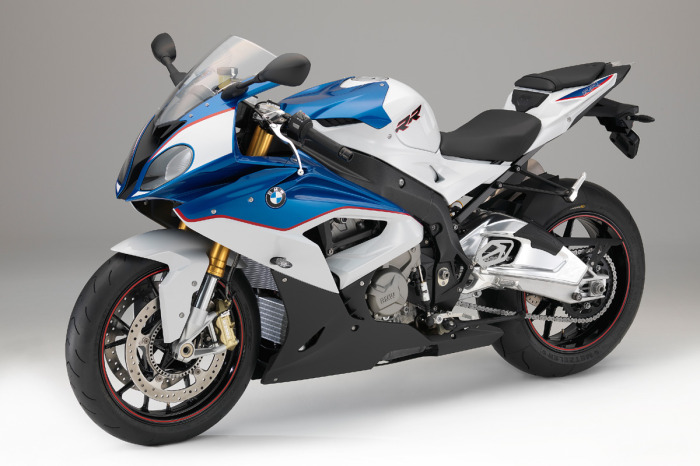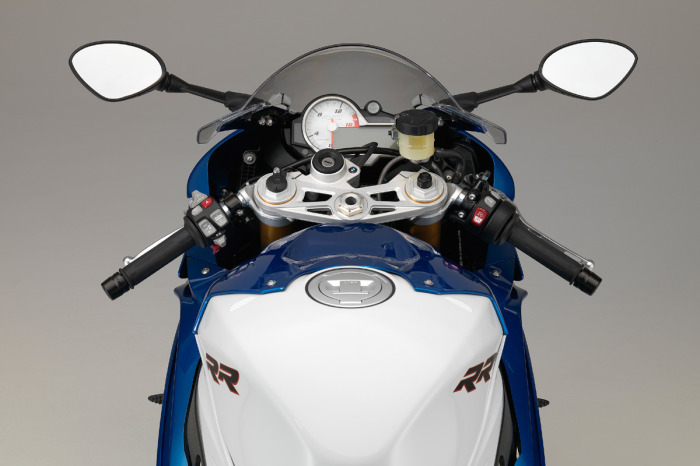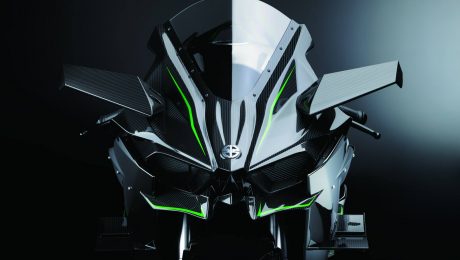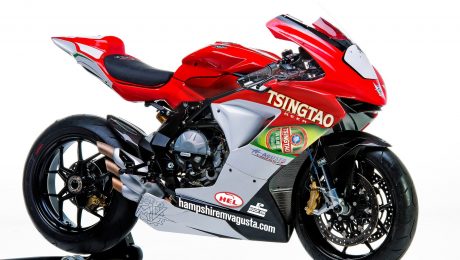2015 New Triumph Street Triple RX
2015 New Triumph Street Triple RX, The naked middleweight market has been dominated by Triumph’s Street Triple ever since it first launched in a maelstrom of surprise and giggling back in 2007.
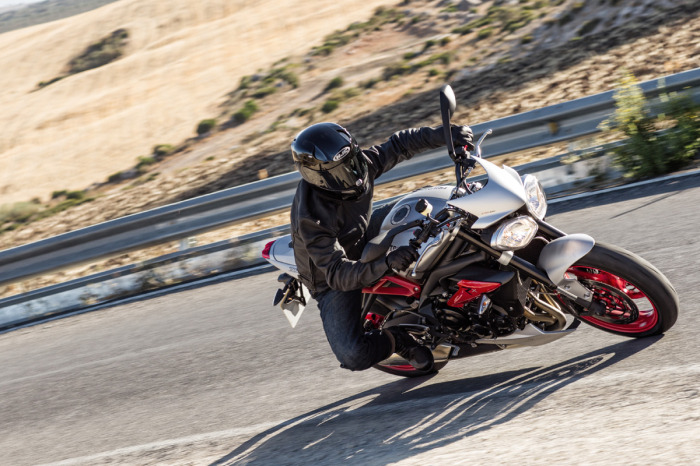
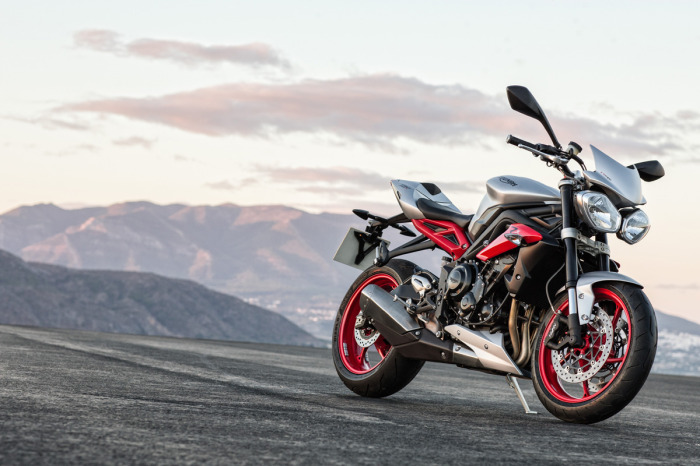
The R model only added to the depth of the naked’s talents, and both models continue to attract a seemingly inexhaustible stream of new buyers.
For 2015 they’ll have even more temptation to try and resist, as the firm adds an X to the model designation.
Blending the brilliance
This isn’t just a bit of paint and a new decal, the headline change for the RX is the junking of the old tail unit, to be replaced by one from the Daytona 675R. It’s such an obvious mod that you have to wonder why they didn’t do it earlier.
The sleeker new silhouette is accentuated by the new Matt Silver paint and deep Diablo Red colouring of the lightweight race inspired wheels. Triumph’s accessory seat cowl, belly pan and fly screen are standard fitment, and complete the aesthetic overhaul.
The heart RX remains Triumph’s signature 675cc triple, a 12-valve unit derived from the Daytona sportsbike, which has been mildly retuned to deliver a punchy 105bhp and 50lbft of torque. There’s still nothing wrong with the motor, and being wisely conscious of that Triumph have left it well alone for 2015.
The new Street Triple RX will be available in dealerships from January 2015. Prices are yet to be confirmed, but we would expect only an incremental price increase over the existing R model’s £8149.
Engine
Triumph have not messed with the existing Street Triple R unit, meaning a 105bhp 675cc inline-triple, which is more than capable of tempting you and the RX into plenty of mischief.
Chassis
The front end of the bike is unchanged, while the rear subframe and seat unit are stolen directly from the Daytona 675R, giving the RX a sharper and sleeker rear end.
Electronics
The only new addition to the RX is the provision of the accessory quickshifter as standard fitment – making it even easier to get through to sixth on the back wheel.
Brakes
The R’s Nissin radial 4-piston calipers carry over to the RX, also with the switchable ABS system – all biting on to a pair of 310mm floating discs.
ORIGINAL STORY
If the decal on the side panel is to be believed, this is the new Triumph Street Triple RX, which MCN expects to be unveiled at the Intermot show in Cologne, Germany, tomorrow.
Spied undergoing a test at Cadwell Park in Lincolnshire two week’s ago, the model is clearly an interim update or special edition, rather than a new version of the massively popular triple.
Already a sales success for Triumph, the Street Triple has featured in the UK’s top ten best sellers consistently since its launch in 2007, and subsequent 2013 update.
This new version will only help it stay there, with its aggressive R styling, and the addition of a new subframe and tail unit, seemingly directly lifted from the Daytona 675.
Fitted with a flush-mounted cowl, it almost looks like a single seat unit, but the rear pegs reveal that there is a pillion perch hidden beneath.
Also visibly different is the colour of the Nissin radial brake calipers, while the units themselves appear to be identical to the existing Street Triple R’s.
- Published in Motorcycle Review
2015 New BMW S1000RR
2015 New BMW S1000RR, BMW’s superbike rivals must be wondering just what they have to do to keep up as the German firm reveals a completely new, lighter, more powerful and even more advanced version of the S1000RR; a bike that already dominates the class.
The 2015 S1000RR is the first completely new version of the bike since the original appeared in 2009; the 2012 overhaul being merely a bit of a polish up in comparison and it has distilled five years of racing and road bike experience to bring these changes to the new bike.
Nobody ever stepped off an S1000RR yearning for more power or less weight; but now they have both in the form of 199bhp at a searing 13,500rpm and a belting 83.3lbft torque, while the weight has dropped (even with all of the electronics and ABS system fitted) from 209kg to 204kg fully wet.
At the heart of the claimed 199bhp are changes including a newly-engineered cylinderhead, a new intake camshaft and lighter intake valves.
The airbox has been changed for a larger capacity and shorter intake lengths, while the all-new exhaust system ditches the front underbelly silencer to contribute to a 3kg weight loss. A lighter battery sheds another kilo from the total, too.
The frame changes are also comprehensive. The twin-spar aluminium alloy frame is both stiffer and lighter and gets new geometry with new steering head angle, wheelbase and a new swingarm pivot point.
The new S1000RR can also be specified with an updated version of the semi-active BMW Dynamic Damping Control (DDC) suspension system.
In terms of the electronics, BMW have fitted three standard modes of Rain, Sport and Race. They can be supplemented by the Pro riding mode option to give a further two, track orientated modes of Slick and User. Pro riding mode also offers launch control and a programmable pitlane speed limiter.
There’s also include a quickshifter for faster gearchanges both up and down the ‘box. The traction control has been recalibrated to work with the ABS and uses lean angle sensors to further improve the safety systems.
The S1000RR even gets optional cruise control and heated grips, along with a new LCD dashboard.
New S1000RR electronics
The BMW S1000RR set the standard for the superbike class when it was launched in 2009, but the challenge from the Ducati 1199 Panigale and Aprilia RSV4 has been hard fought. BMW are aiming to take the top step again with the 2015 S1000RR, which gets a host of new electronic rider aids.
Standard fit electronics include the three riding modes of Rain, Sport and Race as well as Automatic Stability Control (ASC) with a lean angle sensor. Add the Pro riding mode as an option and you get Slick and User modes along with Dynamic Traction Control (DTC), which adds the banking sensor and seven stages of traction control intervention.
The different riding modes modify engine power and torque, traction control and suspension set-up and ensure the ABS system is matched in the best way for the conditions. The optional User mode means the rider can tailor all of the different electronic settings to their own tastes.
Engine
Significant reworking of the 999cc engine has resulted in a 6bhp boost at peak, thanks to new intake cams, lighter valves, a new airbox and an all-new exhaust system – which also sheds 3kg.
Styling
The asymmetrical face of the RR has been reversed for 2015, while the whole package has been lightened and sharpened.
Electronics
A raft of features have trickled down from the HP4, and the new bike gets semi-active suspension, second generation traction control and quickshifter, and new riding modes.
Chassis
The biggest change to the new frame completely revised back section, adding more flex around the swingarm pivot to improve drive, mechanical grip and feedback.
ORIGINAL STORY
BMW have confirmed that they will release three new models at tomorrow’s Intermot show in Cologne, Germany.
Amongst the three is expected to be an all-new S1000RR, boasting new chassis, new bodywork, heavily revised electronics and strong rumours the engine has undergone the same level of development.
Not only will the new bike represent a serious increase in performance over the current model, it will also eclipse the spec of the firm’s flagship HP4, which will cease to be a part of the model line-up in 2015.
More power, more control
The new RR has still not been seen completely without any disguise, but with several very clear spy shots to work with, MCN commissioned this digital rendering (red and white S1000RR) to show all the design elements of the new bike.
Tomorrow we’ll see how close we are to the real deal, but this is as close as we can get to a photograph of the finished bike.
What can’t be seen in the spy shots is the rumoured engine work, which our European factory source suggests has been significant.
The net result is expected to be a hike of ‘five or six’ bhp at peak compared to the out-going model, meaning that the new RR will boast an output nudging 200bhp in standard tune.
While the crankcases look to be near-identical between the existing bike and the test mules, it’s thought that all the development has gone into the cylinder heads to achieve the power boost, in conjunction with a complete new exhaust system.
Power is nothing without control though, and BMW is continuing to use the S1000RR to showcase its technological prowess.
With the HP4 being discontinued for 2015, the RR is expected to benefit from everything that model had to offer, including the ‘cornering ABS’ which became available on the HP4 just a few months ago.
The system, developed by Bosch and also used by KTM on the 1190 Adventure, enables the rider to brake heavily mid-corner without tucking the front, or causing the bike to stand up.
This system will be linked to the RR’s rider modes and the HP4’s semi-active suspension (dynamic suspension system DDC), which is also expected to become standard fitment.
With chassis mods aimed at delivering more flex around the swingarm pivot for greater feel and connection between the back tyre and the tarmac, and the increased control offered by the suspension and electronic improvements, the RR is certain to widen the existing gulf from its competitors.
Expected changes
Chassis
The RR appears to have a new frame, and the clearest indication is around the rear section. The expectation is that more flex has been dialled in to increase connection
and drive.
Front cowl
The biggest change to the styling of the new RR can be found in its face. BMW appears to have reversed the asymmetrical headlamps compared to the 2010-14 models, while also adding a beak at the base of the cowl, which we have also seen in spy shots of the sport-touring version of the S1000, which we believe will
Electronics
What is impossible to identify from the spy shots is the level of electronic development on the RR., but we’d expect all the HP4’s functionality, and second generation traction control.
Exhaust
One of the first new details that emerged from the spy shots was a new exhaust system. The first image showed an aftermarket Akrapovic version with twin exits, while the most recent shot shows the new exhaust to be a more conventional unit, but more trapezoidal in shape.
Rearsets
The first two spy shots show the 2015 bike has new rearsets to go with the new main chassis. BMW’s Gear Shift Assistant (quickshifter) is visible in the shots, and we know the firm has been working on a new version – likely to be fitted to their flagship sportsbike.
Fairings
The spy shots show completely new bodywork on both sides, while maintaining the bike’s trademark asymmetry. BMW is clearly keen for this new model to look like an evolution, not revolution, building on the existing bike’s popularity, but maybe missing the chance to appeal to a new pool of buyers.
Brakes & Suspension
The 2015 bike is expected to get the new version of Bosch’s cornering ABS, which was made available on the HP4 earlier this year.
Dubbed ABS Pro by BMW, it will be standard fit on the new RR, and will communicate with semi-active electronic suspension, and multiple rider modes, including a new rider-set mode.
- Published in Motorcycle Review
Kawasaki’s new Ninja H2R
Kawasaki’s new Ninja H2R, It’s been a long time coming, but there’s no doubt whatsoever that Kawasaki’s new Ninja H2R has been worth the wait.
The sharp eyed will already have spotted the lack of headlamps, a numberplate hanger, indicators and mirrors (not to mention the fitment of slick Bridgestone V01 rubber), but don’t despair, the H2R is the track-only version of this incredible new Ninja – there’s a road bike in the wings, too. Called the Ninja H2, it will be unveiled at the Milan show in four week’s time.
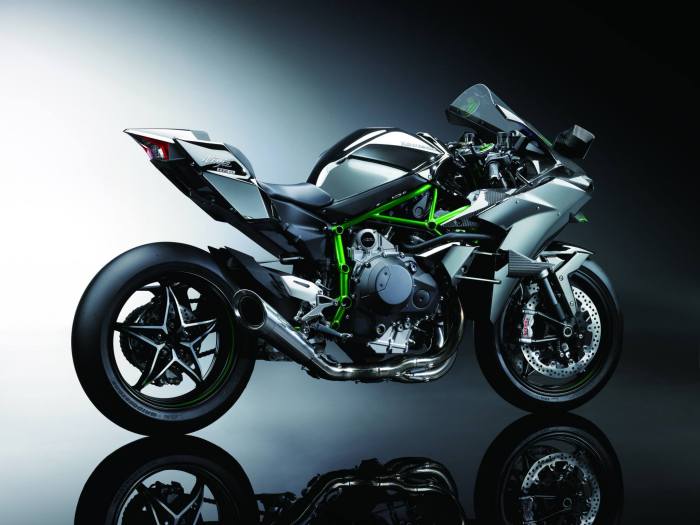
The H2R you see here is the very pinnacle of what Kawasaki can do. The development concept was ‘to offer the kind of acceleration no rider had experienced before’, and with 296bhp available at your right wrist, it’ll certainly deliver that for the first time from a production bike.
While Kawasaki hasn’t given any indication of the bike’s acceleration capability or top speed, we believe this track-only unrestricted version of their new flagship could easily force its way through the air at well over 200mph.
At the heart of this all-new bike is a supercharged 998cc inline-four capable of developing 50% more power than its next nearest superbike competitor, BMW’s new 199bhp S1000RR (see over).
This intense power output could easily upset the dynamic performance of a normal superbike, so Kawasaki have drawn on all their different divisions to ensure that the chassis and aerodynamics are capable of coping with the power output, and resultant high speeds.
Using the Ninja name was an obvious choice, it’s a Kawasaki sportsbike after all, but the decision to use the H2 name shows how much reverence the firm has for its epoch-making 2-stroke Mach IV 750 triple, which was known as the H2.
In its day it delivered acceleration like no other, and with that being the goal for the H2R, it became an obvious choice. It also led to most of the world’s media claiming the new supercharged Ninja had to be a 750, also citing the other H2 – the ZXR750 H2 – but MCN has always maintained the new bike would be a litre class machine.
As well as carrying the Ninja moniker, Kawasaki have also graced the new H2R with their ‘River Mark’, a rarely used piece of branding which dates back to the 1870s, and reserved by the company for products they consider to be of particular historical significance.
Bespoke supercharger
The supercharger has been developed completely in-house with assistance from other the Gas Turbine & Machinery Company, Aerospace Company, and the Corporate Technology Division, all parts of Kawasaki Heavy Industries (KHI).
While the supercharger itself is entirely conventional, optimising it for use on a motorcycle meant that in-house development was essential to achieve the maximum power and acceleration characteristics the engineers wanted to offer.
That trellis frame
While everyone knew the new H2R was going to be supercharged, the trellis frame was far more of a surprise.
Developed using the latest analysis modelling technology, it has been designed to balance the huge power output of the motor, with enough flex to ensure the stability, mechanical grip and feedback needed for high-speed riding.
The primary objective was stability at ultra-high speeds, which usually means a long wheelbase, but Kawasaki didn’t want to sacrifice corning performance, so it had to be compact. The firm then looked to the aerodynamics to boost the H2R’s high-speed stability.
Slippery operator
As speed increases, wind resistance increases exponentially, so Kawasaki needed to make the H2R as slippery as possible, meaning that aerodynamics would play a crucial role in the bike’s top speed and stability.
With all but 300bhp on tap there’s clearly no deficit in the engine output, so the design team enlisted its Aerospace Company to help develop the dramatic sculpted bodywork to let it cut through the air.
The fairing design also maximises cooling performance and heat dissipation, helping the 998cc supercharged engine to operate in its ideal temperature range, while the Ram Air duct is ideally positioned to direct airflow to the supercharger.
Intense-Force Design & Craftsmanship
Kawasaki say that the styling concept for the Ninja H2R was defined by a three-word label: ‘Intense Force Design.’
This is the firm’s halo product, and every element is Kawasaki at its very best, from the engine and aerodynamic development, through to the mirror-finish black chrome paint specially developed for this model
Kawasaki confidently states that it’s the best bike they have ever built. So how much will all this cost you? Kawasaki won’t say yet, but expect this track-only model to be up there with Ducati’s Superleggera, while the road-going H2 is more likely to be around £20,000.
Bodywork
The carbon bodywork was designed with the assistance of the firm’s aerospace division to ensure optimum aerodynamic stability. The black chrome paint was developed specifically for the H2R to help reduce drag.
Supercharger
Designed completely in-house at KHI, this is no parts-bin bolt-on. Conventional litre-class sportsbikes can currently develop up to around 215bhp reliably, the H2R will be topping out at almost 300bhp – while the H2 road version is expected to be around 80bhp less.
Chassis
A trellis frame? On a Japanese superbike? It was certainly a surprise, but it’s the best packaging solution for the engine and chassis components, the ducting needed to the supercharger, and providing the blend of strength and flexibility needed.
Electronics
Kawasaki have given no indication of the electronics package fitted to the H2R, but there is a clearly visible quickshifter fitted to the selector arm, and its size suggests this will be for both upshifts and downshifts.
There is also a KISS sticker on the front fender, suggesting the firm’s in-house traction control system is present, and the steering damper clearly has electronic control. There’s no visual hint of the suspension being semi-active or electronic.
The Facts – Ninja H2R
Engine Type: Supercharged liquid-cooled inline-four
Displacement: 998cc
Supercharger Type: Centrifugal, scroll-type
Maximum Power: 296bhp
Frame Type: Trellis, high-tensile steel
Tyres: F: 120/600R17 Bridgestone V01 slick R: 190/650R17 Bridgestone V01 slick
ORIGINAL STORY
Kawasaki’s all-new supercharged Ninja H2 is now less than 24-hours away from being unveiled at the Intermot show in Cologne, Germany.
With MCN at the forefront of breaking news about the project since patents first started to be filed in 2011, the latest information leaking from Kawasaki suggests this bike is going to be a radical departure from their current range; a high-specification, super performance bike that will sit at the top of the range as a very distinct halo offering, likely to cost in excess of £20,000.
This is not a replacement for the ZX-10R, and insiders suggest this is not a replacement for the ZZR1400, either.
Way back in 2011 MCN revealed that Kawasaki had filed a host of new patents, all relating to a new supercharged motorcycle. From the outset it was clear that this was to be a high-performance, four-cylinder machine with a single supercharger mounted directly behind the engine.
Despite the lack of official information about the bike, one key statement to its intentions is hidden in the source data of the www.ninja-h2.com teaser website set up to plug the bike before its September 30 launch.
Titled ‘description’ it says: “The Ninja H2 was not designed with meeting regulations as a primary concern. Kawasaki’s latest flagship is the result of a pure exercise in pushing the limits of motorcycle technology with the goal of creating the ideal road sportsbike.”
The reference to regulations is clearly talking about racing rules rather than road-going regulations, which the bike will still have to meet if it’s to be the ‘ideal road sportsbike’.
Kawasaki’s decision to make the H2 a pure road bike promises to be the key to its abilities. Our information suggests that the engine will, as shown in some of the patents, be derived from the ZX-10R, keeping that bike’s 998cc capacity.
A sound clip of the bike revving through the gears on Kawasaki’s teaser website initially appears to be higher-pitched than you might expect, but an acoustic analysis of the noise shows that it’s revving to around 12,000rpm – which is what you’d expect from a 1000cc motor.
What about the rest of the bike? Although the most recent patents, surprisingly, show a tubular chassis design, we’re expecting the final version to be similar to the ZX-10R’s beam frame. But this is a high-end bike so we also expect top-quality suspension and electronics.
More than one of the patent images filed by Kawasaki has shown the bike with a single-sided swingarm – not something the firm is known for, but a styling element that’s become synonymous with high-end machines ever since it was adopted by the Honda NR750 and NC30, as well as decades of Ducatis.
This is unlikely to be a flash-in-the-pan for Kawasaki. At the same time as it filed applications for the trademark ‘Ninja H2’ it also filed ‘Ninja R2’ – presumably a derivative of the same bike, and possibly a more affordable mass-market follow-up?
The firm has also registered the name Ninja H2R, suggesting that tomorrow’s release could be a full-on track-only special edition of the H2, likely to benefit from extremely high-end components and materials, and able to fully exploit the new supercharger’s upper limits, meaning a output likely to be approaching 300bhp.
Get used to it
Official power figures have yet to be released, but we wouldn’t expect less than 250bhp – meaning the H2’s tailpiece, disappearing off into the distance, will be a familiar sight for most of us!
Sound’s strange
The engine note you can hear on the H2 teaser website has been acoustically analysed as revving at 12,000rpm, consistent with a 998cc engine. The unconventional sound will be down to the supercharger and the lack of traditional airbox.
Top spec components
Sitting as Kawasaki’s flagship sportsbike, the H2 will no doubt be dripping with high-spec suspension and chassis components, making it worthy of its £20,000 plus price tag.
Familiar face
The H2’s ‘face’ is likely to be dictated by Kawasaki’s decision on the air intake design. Recent patents show a set-up with a single intake on the left side but there are also patents that show symmetrical intakes, too.
How a supercharger works
Any petrol engine’s power is basically governed by how much fuel it can burn. And to burn fuel, it needs air to mix it with. There are three basic ways to get more air into an engine: increase its capacity, increase revs, or compress the air before putting it into the cylinder – and that’s where superchargers and turbos come in.
There are several types of supercharger, but all the Kawasaki designs we’ve seen so far have used centrifugal superchargers. They use a finned disc called an impeller, which is spun at around 100,000rpm to suck the air in through a central hole in the compressor housing, which is the part shaped like a snail’s shell.
It’s basically the same as the compressor side of a turbocharger, but instead of the impeller being driven by exhaust gas, a supercharger’s is driven from the engine’s crankshaft, via gearing to massively increase its speed.
Because compressing air makes its temperature rise, most modern supercharged engines also have intercoolers to bring its temperature back down. Intake air that’s too hot is inefficient and potentially dangerous to the engine.
Kawasaki’s designs so far have shown an air-to-water intercooler, where the intake heat is removed by passing it over water-filled tubes, with that water pumped around its own cooling system to an extra radiator to cool it down again.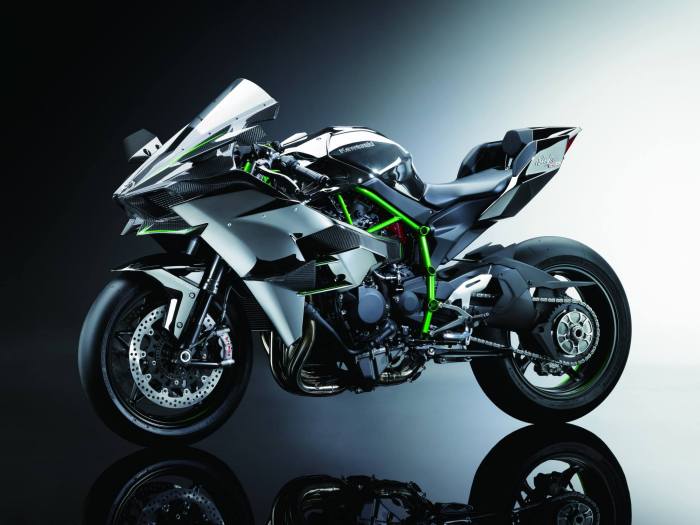
- Published in Motorcycles
MV Agusta set for BSB with Tsingtao Kawasaki
MV Agusta set for BSB with Tsingtao Kawasaki, MV Agusta will return to the MCE British Superbike paddock for 2015, with national Superstock 1000 championship leaders Tsingtao Hampshire Motorcycles making the switch from Kawasaki, for not only superbike but also supersport.
Team owner Dave Tyson said: “We wanted to start planning for the 2015 season at the earliest opportunity and we have been looking at the different markets and have worked in the past with MVs. We visited the factory and had a positive meeting with them and we have developed a new partnership which also includes converting our showroom into MV’s flagship store for the UK.
“We have the bikes and we have already stripped down the F3 and have started work on it. The advantage we do have is that the MV team in Italy are sharing the information so we can work together on the development. The MV is a proven package in the World Supersport Championship and is built as a race bike so has huge potential. Nick [Morgan] will continue as our technical partner at MSS Performance and they will work closely with the factory to develop the engines.
Team boss Tyson’s Hampshire Motorcycles will be having a special event this weekend to celebrate their new MV Agusta dealer status at the dealership in Waterlooville, with everyone welcome.
source http://www.motorcyclenews.com/mcn/sport/sportresults/british-superbikes/2014/september/MV-Agusta-set-for-BSB-with-Tsingtao-Kawasaki
- Published in Motorcycles


